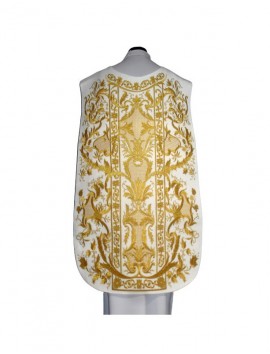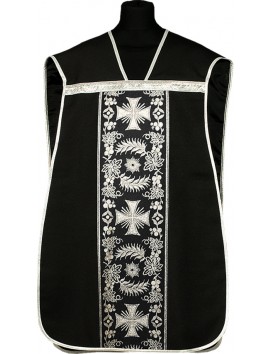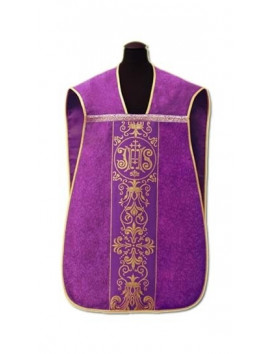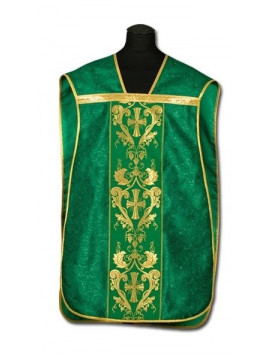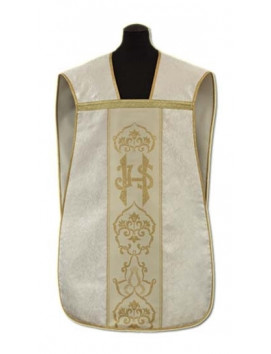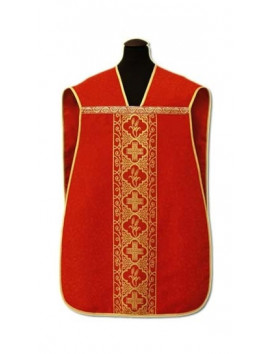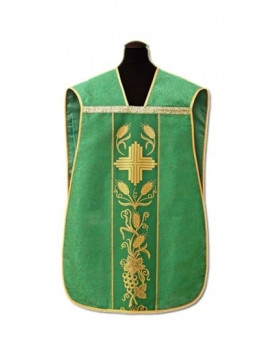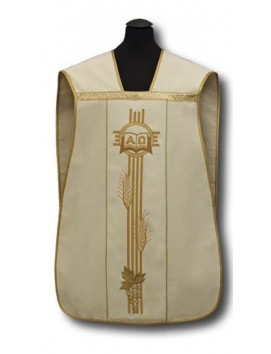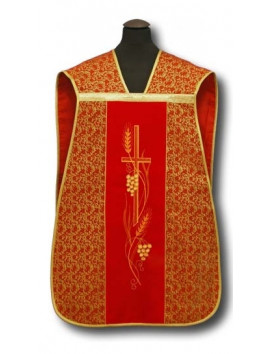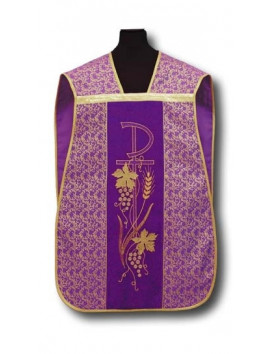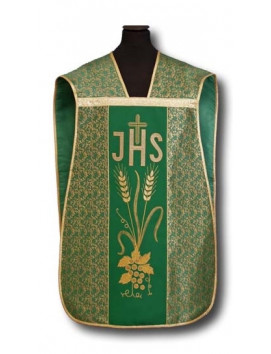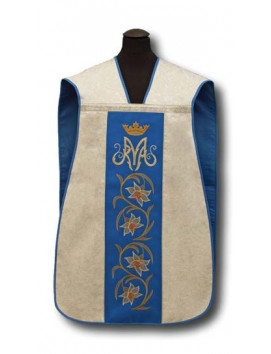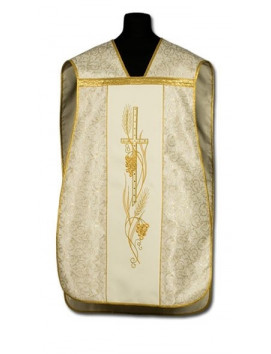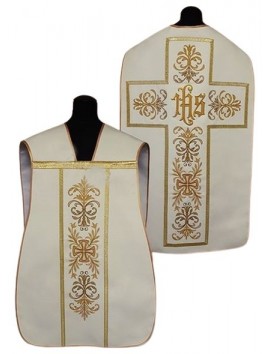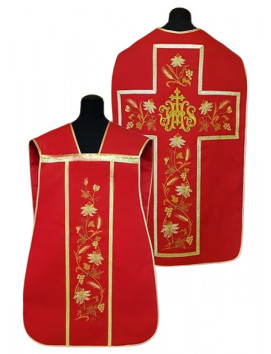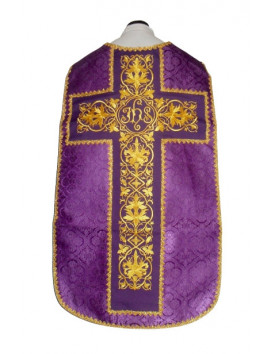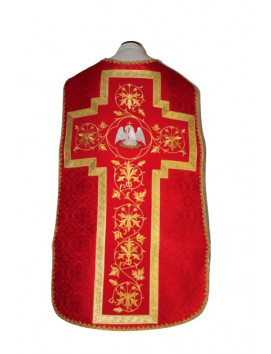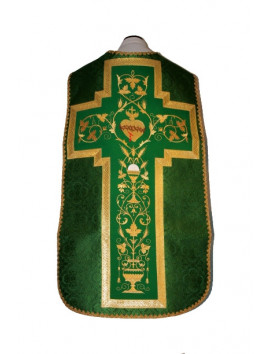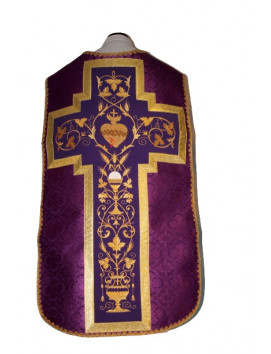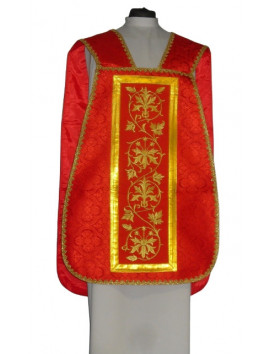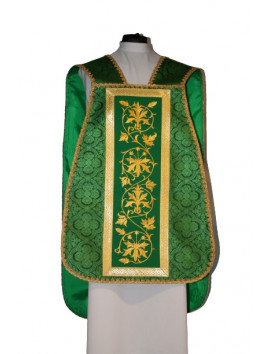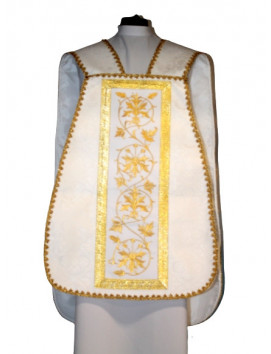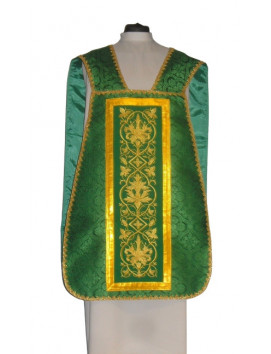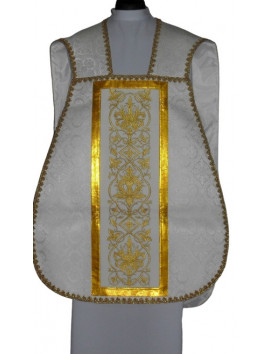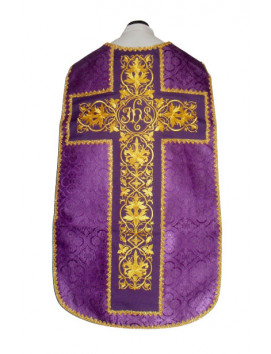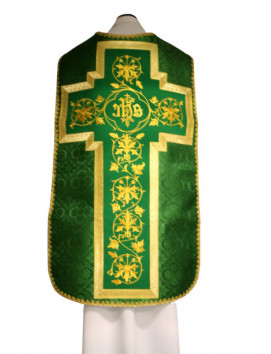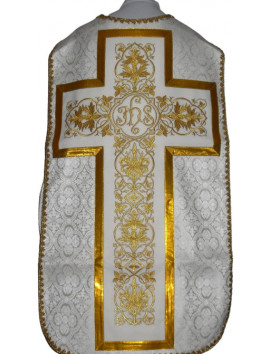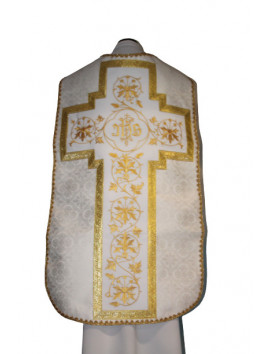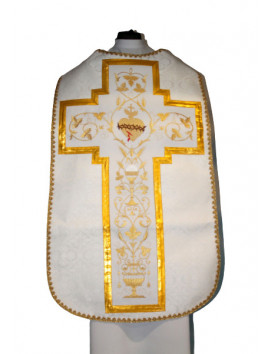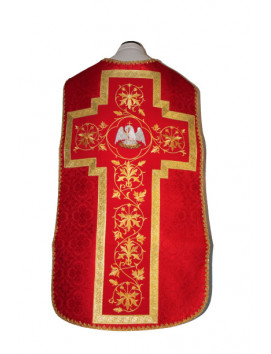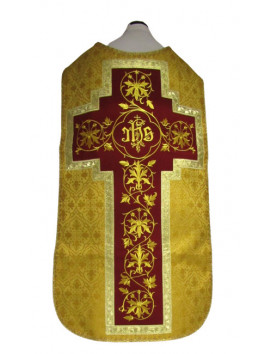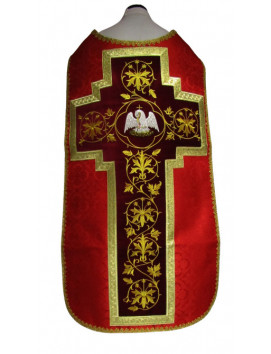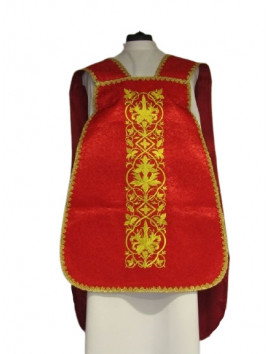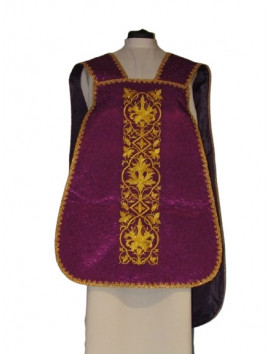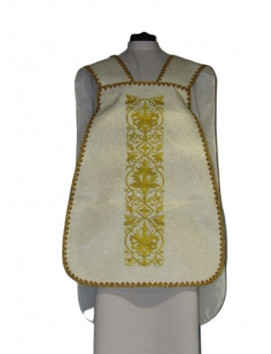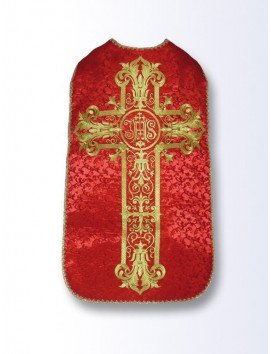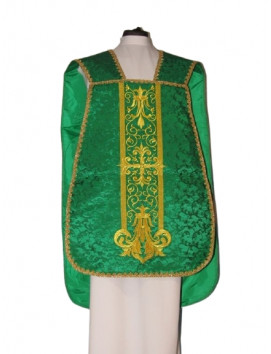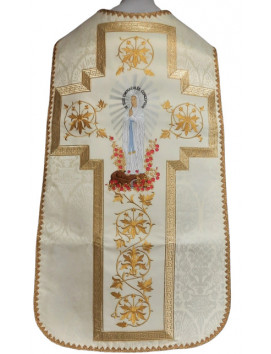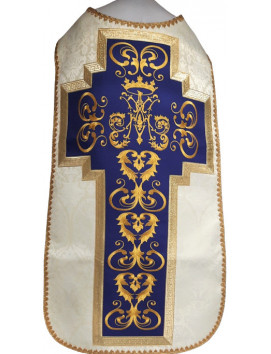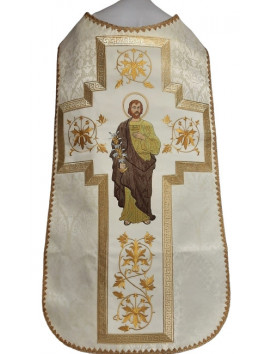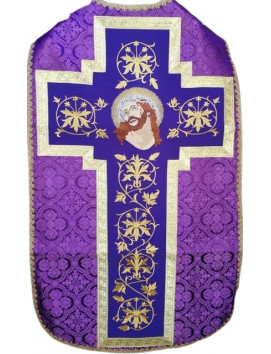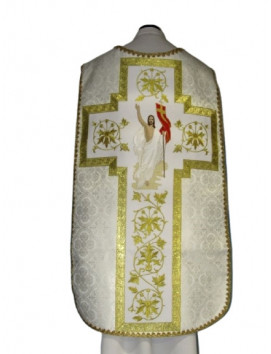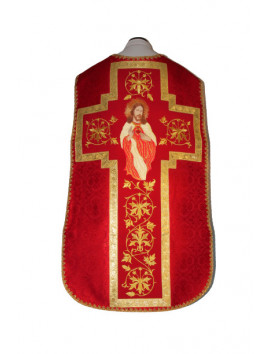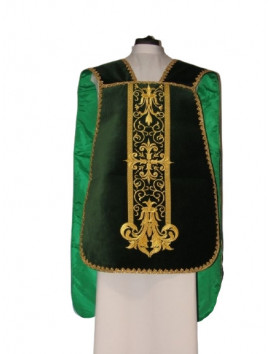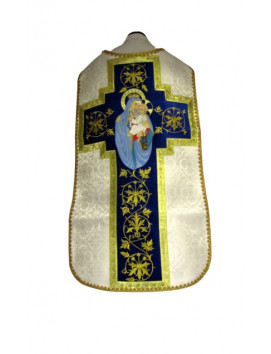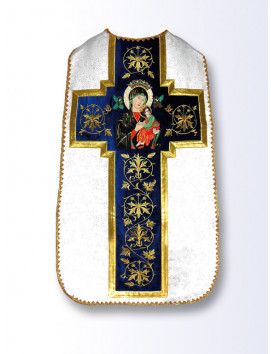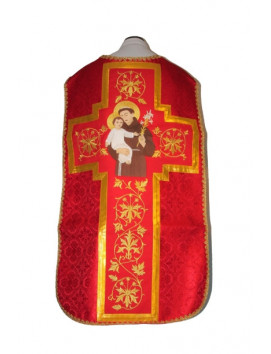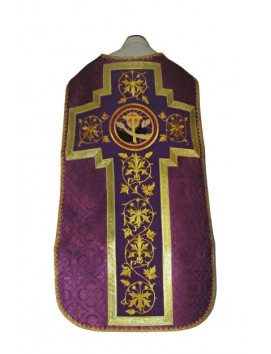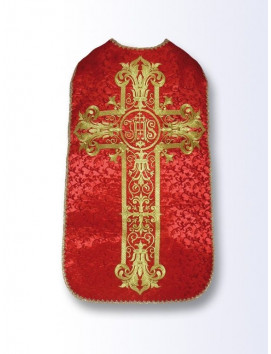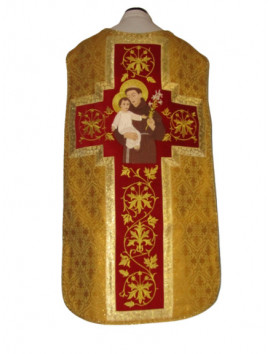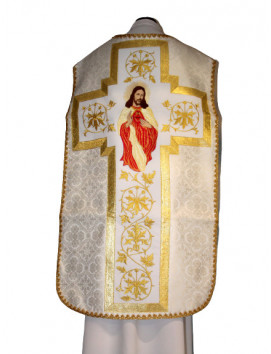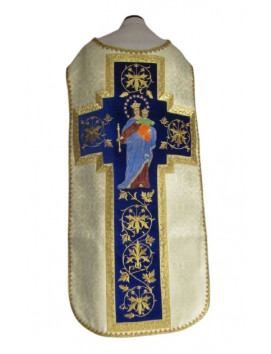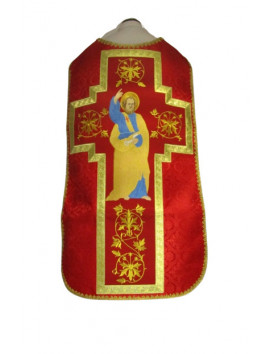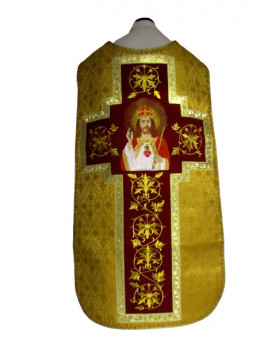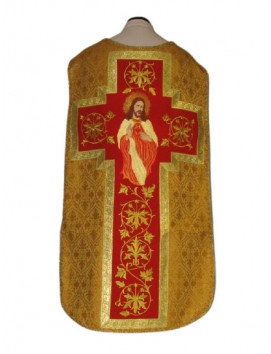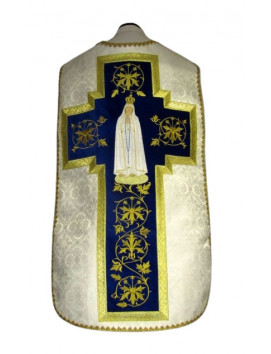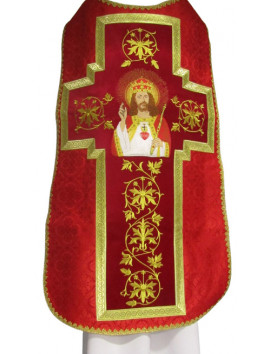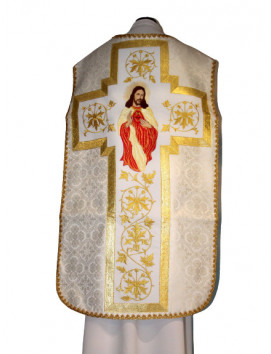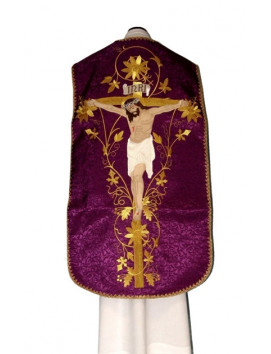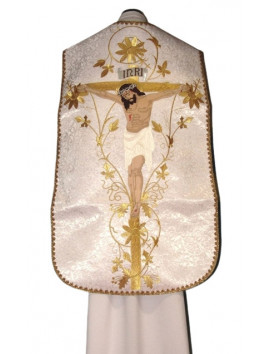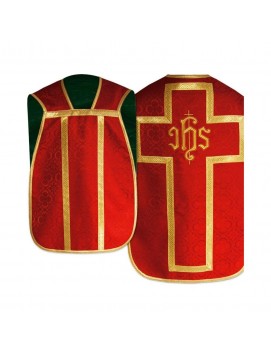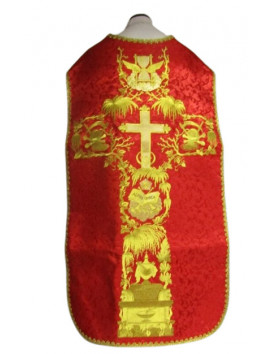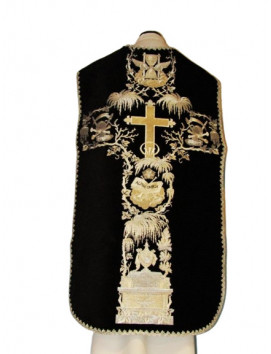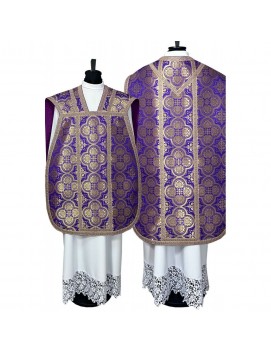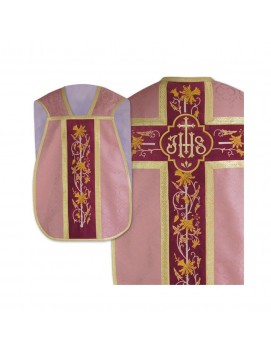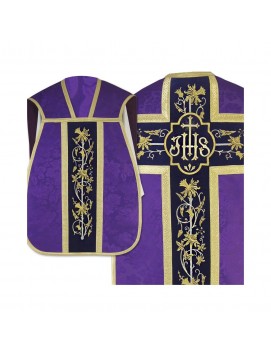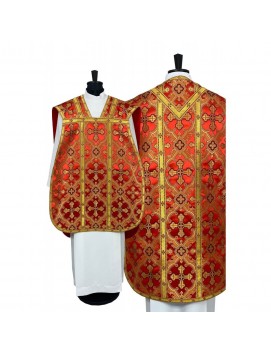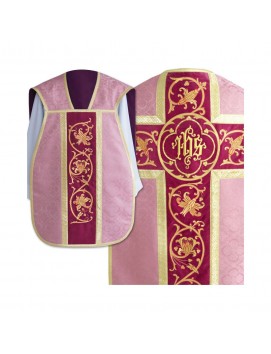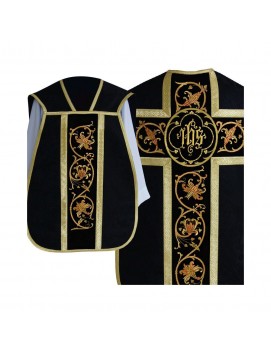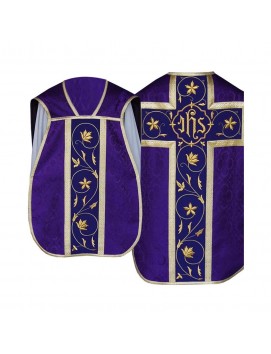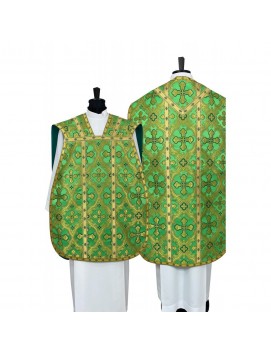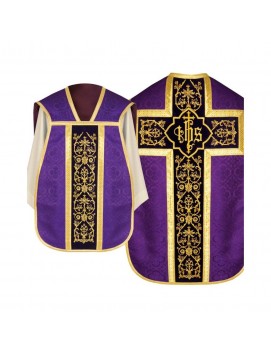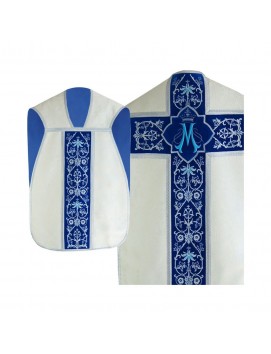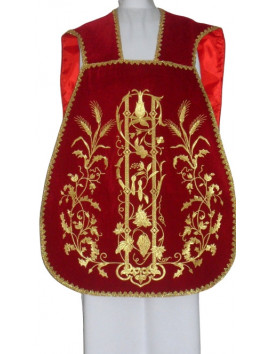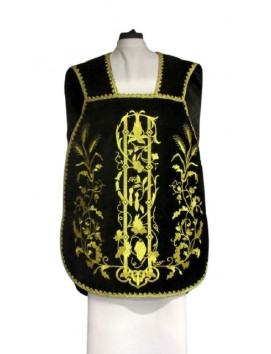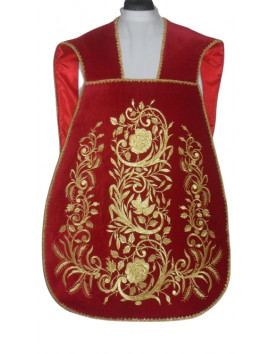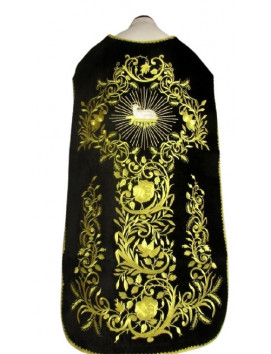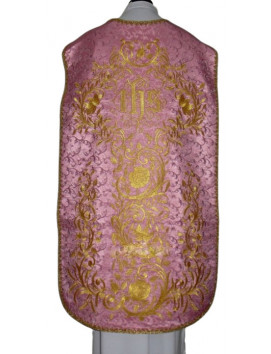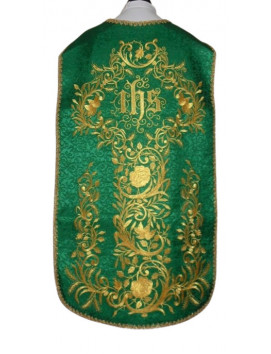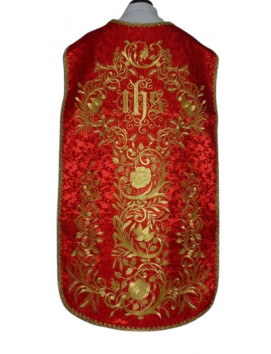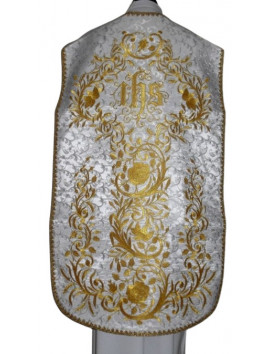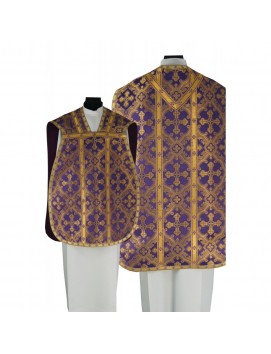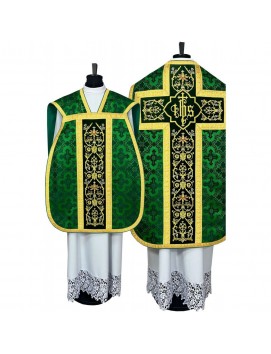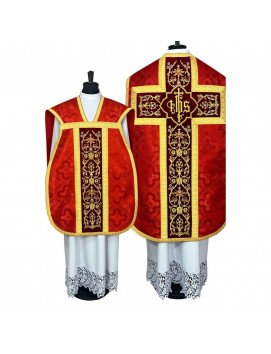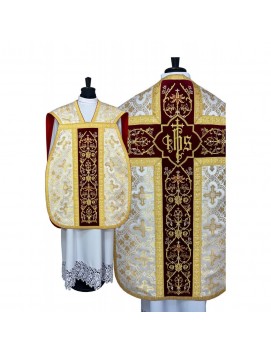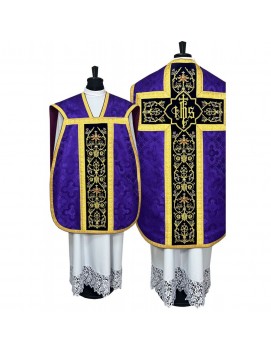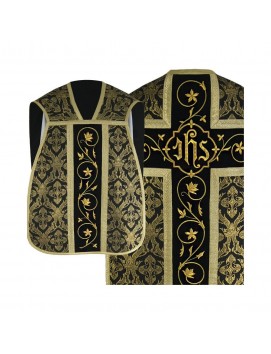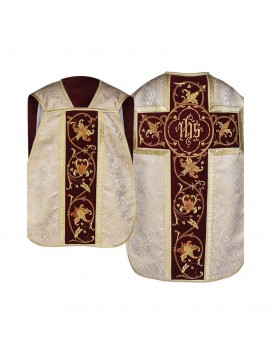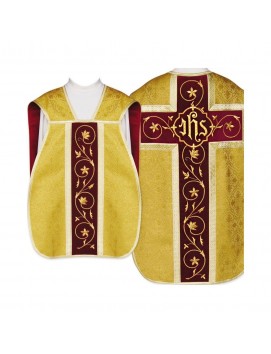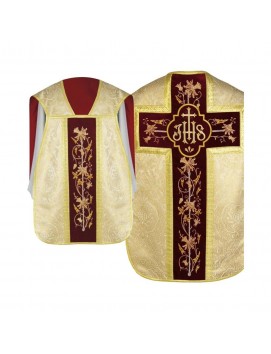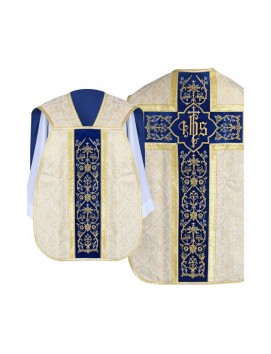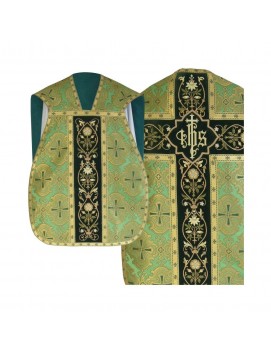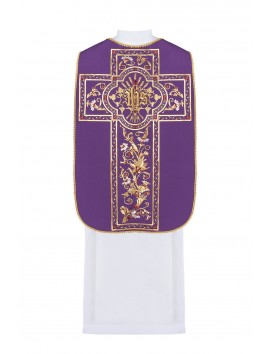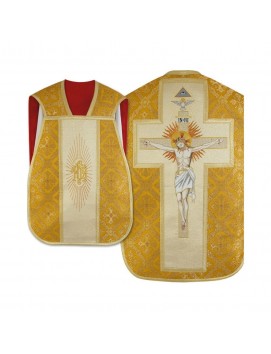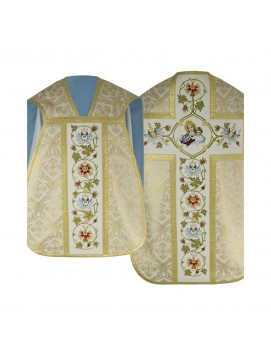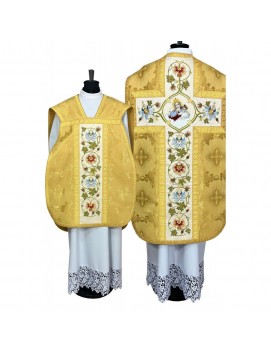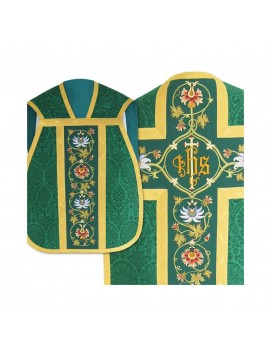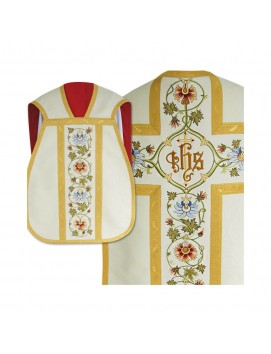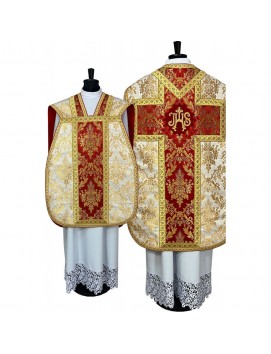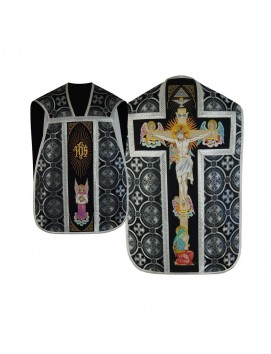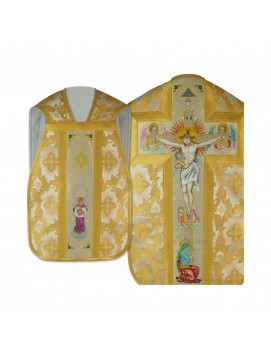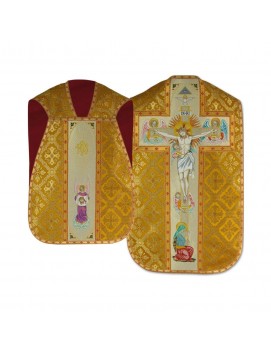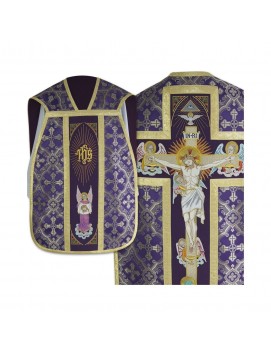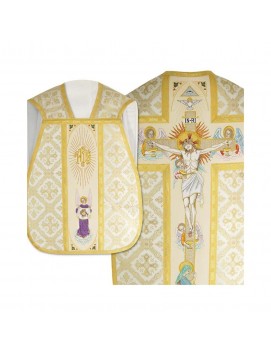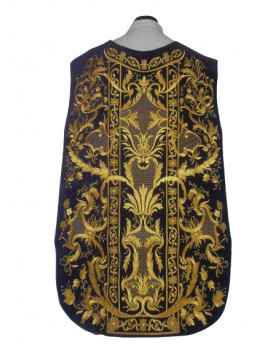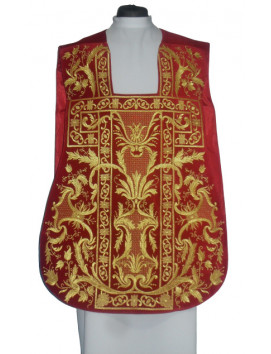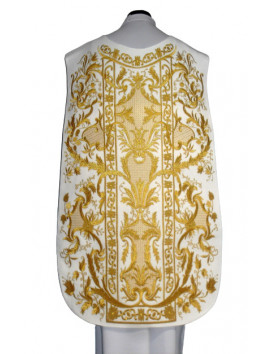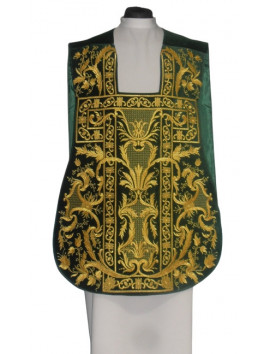No products
Roman chasubles
A Roman chasuble is a type of chasuble, which is the outermost liturgical vestment worn by clergy for the celebration of the Eucharist in Western-tradition Christian churches that use full vestments, primarily in Roman Catholic, Anglican, and Lutheran churches. Roman chasubles are distinguished by the presence of pillar orphreys at the back and a big cross in a “T”. The modern Roman chasuble is an outer garment traditionally worn by the clergy during liturgical celebrations. The Roman chasuble is believed to have originated from Ancient Greek clothing. The use of scapular "Roman" chasubles, whether with straight edges or in "fiddleback" form, is often associated with traditionalism. However, some traditionalist priests prefer ampler chasubles of less stiff material.
A Roman chasuble is a type of chasuble, which is the outermost liturgical vestment worn by clergy for the celebration of the Eucharist in Western-tradition Christian churches that use full vestments, primarily in Roman Catholic, Anglican, and Lutheran churches. Roman chasubles are distinguished by the presence of pillar orphreys at the back and a big cross in a “T”. The modern Roman chasuble is an outer garment traditionally worn by the clergy during liturgical celebrations. The Roman chasuble is believed to have originated from Ancient Greek clothing. The use of scapular "Roman" chasubles, whether with straight edges or in "fiddleback" form, is often associated with traditionalism. However, some traditionalist priests prefer ampler chasubles of less stiff material.
-
Roman chasuble (8) - damask Roman chasuble (8) - damask
Roman chasuble (8) - damask Roman chasuble (8) - damask
$ 187 -
Roman chasuble green velvet (47) Roman chasuble green velvet (47)
Roman chasuble green velvet (47) Roman chasuble green velvet...
$ 443
The Rich Tapestry of Roman Chasubles
Roman chasubles are not just garments but a canvas of history, a testament to the Roman Catholic Church's enduring legacy. These vestments, worn by priests during the celebration of the Eucharist, are steeped in symbolism and tradition. Let's unravel the threads of their rich tapestry, including the chasuble, and understand why priests continue to be a significant part of Christian liturgical wear.
Historical Significance of Roman Chasubles
The Roman chasuble has its roots deeply embedded in the early days of the Roman Empire. Originally, it was a practical garment, a "little house" or casual, a chasuble that provided warmth and protection. Over time, it evolved into a symbol of purity and holiness, worn by clergy during liturgical celebrations, often seen as a chasuble. The design of Roman chasubles has undergone various transformations, from the full and ample conical poncho of the past to the more tailored and ornate versions we see today.
Symbolism Embroidered in Design
Every aspect of the Roman chasuble is laden with meaning. The colors, for instance, are not chosen at random. White symbolizes joy and purity, red signifies love and the Holy Spirit, purple represents humility, and black is used for mourning. The intricate designs, from crosses to images of saints, are not mere decorations but representations of Christ's sacrifice and the virtues of the Christian faith.
Modern Adaptations and Uses
In modern times, while the essence of the Roman chasuble remains unchanged, its form has adapted to suit contemporary tastes and practicalities. Today's chasubles come in various styles, from the traditional fiddleback to the more ample Gothic form, reflecting a blend of historical reverence and modern sensibility.
The Role of Roman Chasubles Today
Despite the passage of time, Roman chasubles continue to play a pivotal role in Christian liturgy. They are a visual expression of the priest's role as a mediator between the divine, the congregation, and the chasuble. Beyond their liturgical use, these vestments are also collected as decorative pieces, signifying a bridge between the past and the present.
FAQs: Unveiling the Mysteries of Roman Chasubles
What is the origin of Roman chasubles?
Roman chasubles originated as a practical garment in the Roman Empire, evolving into a liturgical vestment around the 4th century.
What do the different colors of Roman chasubles represent?
Colors like white, red, purple, and black represent joy, the Holy Spirit, humility, and mourning, respectively.
How have Roman chasubles changed over time?
Roman chasubles have transitioned from being a full, conical poncho to more tailored forms with elaborate ornamentation.
Can Roman chasubles be used outside liturgical ceremonies?
Yes, they can be collected as decorative pieces or used in fashion by those who wish to pay homage to their historical and religious significance.
Are Roman chasubles still relevant in modern times?
Absolutely. They remain a key symbol of the Christian faith and continue to be used in religious ceremonies, including the chasuble.
In conclusion, Roman chasubles are a fascinating blend of history, art, and spirituality. They are not merely garments but symbols of a faith that has withstood the test of time. Whether worn during a solemn Mass or displayed as a piece of art, Roman chasubles will always command admiration and respect.

